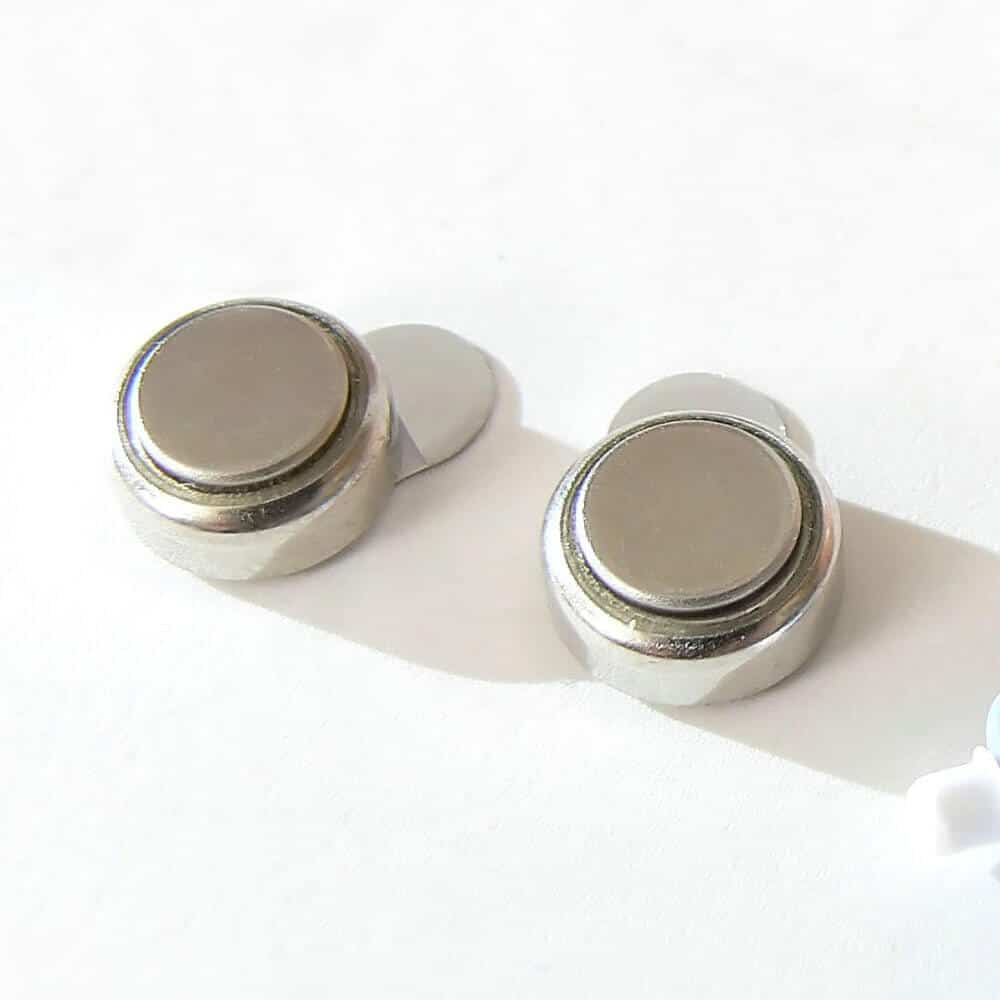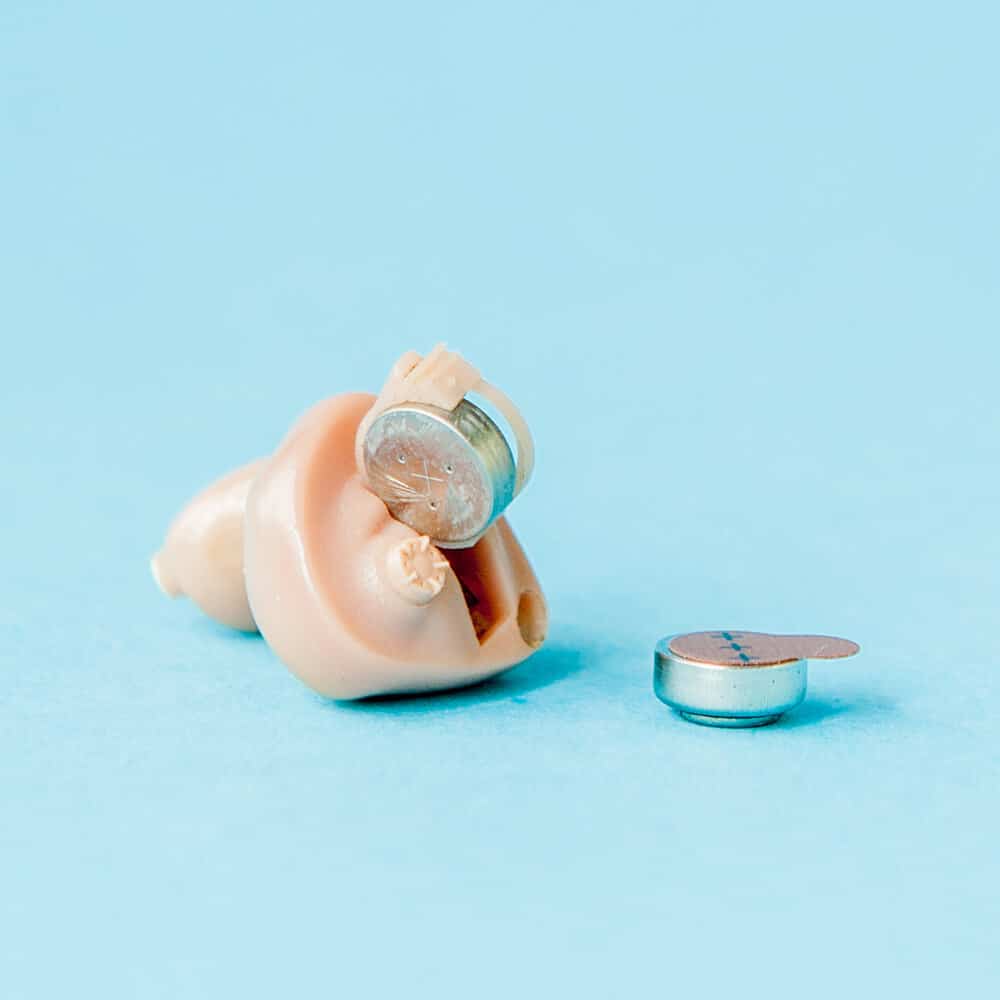Hearing Aid Batteries
Disposable Zinc-Air Batteries
Disposable batteries can be purchased from your hearing care provider (often the best option as they tend to be fresher), grocery stores, drug stores, electronics stores, and department stores. It is not hard to find a pack of hearing aid batteries in any populated area.
Zinc-air batteries get their power from air-activated zinc. They come sealed from the air, and when you pull the sticky tab that creates the seal, they start to provide power in about one minute. Once the sticker is pulled, the batteries are activated and cannot be put away to be stored for future use.

Disposable zinc-air batteries should be stored in a dry, room-temperature environment, where they will remain stable for up to three years prior to activation. Because they do have a shelf-life, it’s not a good idea to buy a huge bulk of batteries to keep around for future use. It is better to buy smaller packages of batteries, and replace them as needed so your batteries will offer the best performance.
Also called “button batteries,” disposable hearing aid batteries come in four sizes, and the type your hearing aid uses will depend, in turn, on its size. The larger the hearing aid, the larger the battery it will use. The biggest zinc-air battery used in hearing aids has a diameter about half that of a dime, and is used in BTE (behind-the-ear) hearing aids. Depending on your hearing aids, these batteries will last from 9–20 days.
As hearing aids get smaller to fit deeper inside the ear canal, so must the batteries be smaller. The smallest zinc-air batteries will last from 3–7 days, again depending on your particular hearing aids and how you use them.
The four different sizes of hearing aid batteries are color coded for convenience. This helps you keep your batteries organized even if you live in a household with someone who uses a different type. The air-seal tabs on your batteries will either be blue (largest), orange, brown, or yellow (smallest).

Caring For Hearing Aids With Zinc-Air Batteries
If your hearing aids use disposable batteries, they will have a “battery door” somewhere on the hearing aids. This battery door makes the insides of your hearing aids a little more vulnerable to moisture and dirt than rechargeable hearing aids. For this reason, as well as to preserve battery life, it’s a good idea to leave the battery compartments open at night, after you wipe down your hearing aids with a clean, dry cloth.
Throwing your batteries in the trash contributes to environmental contamination. You can drop off your dead zinc-air batteries to a hearing care provider in your area for safe recycling.
Rechargeable Hearing Aids
Rechargeable technology has come a long way. The rechargeable batteries used in hearing aids are lithium-ion batteries, the same as are used in smartphones, tablets, laptop computers, and many other modern rechargeable devices.
Rechargeable hearing aids have the advantage of not requiring a battery door. This makes them less vulnerable to moisture and dirt, which can help them last longer with fewer repairs. Since Bluetooth connectivity has also become nearly ubiquitous, many models also do away with physical controls, since volume and programming can be adjusted from a smartphone app. When buttons, knobs, and battery doors are removed, the sensitive electronics inside a set of hearing aids are that much more protected. Phonak has even released a set of hearing aids that is waterproof up to about a foot and a half.
The main drawback of modern rechargeable hearing aids is that a single charge does not yet last as long as a set of disposable batteries. For most people, most of the time, this will not be a problem. Rechargeable batteries typically provide around 20 hours of power on a single charge, while taking only about 3 hours to receive a fresh full charge. As long as you have a wall outlet that you can plug your charger into each night, you shouldn’t have to worry about running out of power during the day, and you’ll never have to worry about obtaining fresh batteries. The battery itself will last as long as your hearing aids—typically four to seven years.
Many models also come in a portable charging case, which itself is battery-powered. The case houses a larger battery than the hearing aids, and every time you put your hearing aids in their case, they’ll charge up again. Usually these cases can provide up to three charges, meaning you’ll be able to go three days without needing to encounter a power source for recharging.
If you have questions about hearing aid batteries, need to restock your supply of batteries, or need to schedule a hearing test, call Vital Hearing today.
